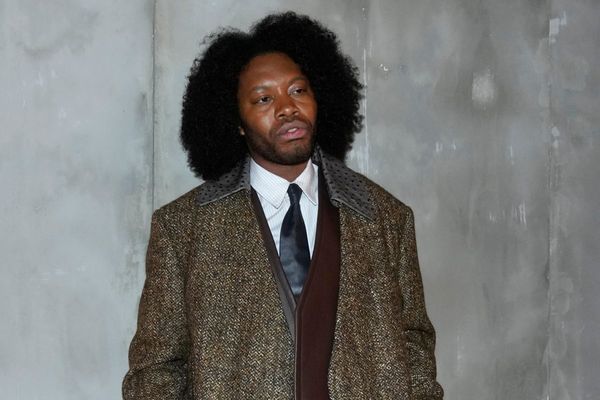
In a culture that lives and dies by the scroll, permanence feels almost subversive. Everything in our lives — from news cycles to social media feeds to relationships mediated by apps — is designed to vanish, reset, refresh. But Eric Chan, a Hong Kong–born calligrapher-turned-tattoo artist, is leaning into something riskier: marks that don’t go away.
The body, for Chan, isn’t just flesh. It’s an archive. A surface where memory, culture, and vulnerability get inscribed in ways a diary or an Instagram post never could. And while Silicon Valley’s favorite pastime is “disruption,” Chan’s disruption is quieter and more radical: he’s exporting the ancient discipline of Chinese calligraphy into tattooing, giving one of the world’s oldest writing systems a new medium — and a new audience.
Chan’s story doesn’t read like your typical artist’s origin myth. Born Chan Chun Hong, he came of age in Hong Kong, attending La Salle College before moving on to the University of Science and Technology to study computer science. It’s not exactly the training ground you’d expect for someone now positioned to join Bang Bang Tattoo, the Manhattan studio that has become a global mecca for body art.
But the irony is telling. What Chan carried with him wasn’t programming itself — it was the programmer’s rigor. The discipline of repetitive problem-solving, the patience for detail, the comfort with precision. And unlike the countless classmates who went on to fintech or gaming startups, Chan applied that rigor somewhere unexpected: calligraphy. First on paper, then — almost inevitably — on skin.
Tattoos Without the Rebellion
The pivot matters because in East Asia, tattoos aren’t just ink. They’re still coded as rebellion, triads, outlaws. To show up with a tattoo in Hong Kong or Tokyo is to invite assumptions about criminality, even shame. Chan knew this. Which makes his decision to take calligraphy into tattooing not just a stylistic choice but a cultural gamble.
He remembers one of his most ambitious projects: a full-back Heart Sutra. Hours of silence broken only by conversation with the client about mortality, identity, and what it means to carry scripture under the skin. For Chan, these weren’t decorative marks; they were manuscripts. His studio became part sanctuary, part archive. Tattoos weren’t rebellion, they were remembrance.
So why New York? Why now?
Because if Hong Kong encodes tattoos as stigma, New York encodes them as currency. Manhattan’s Bang Bang Tattoo has been the launchpad for celebrity culture’s tattoo renaissance. It caters to a global roster, pops up in Vogue and The New York Times, and treats tattooists less like tradespeople and more like auteurs. The studio is famously selective. Joining its ranks is less a job offer than an anointment.
That Chan has been tapped to join speaks volumes. It says Bang Bang is not just chasing technical virtuosity. It’s signaling a hunger for something deeper, more poetic, even vulnerable. For all its polish, the studio is opening its door to intimacy — and Chan’s calligraphy provides that in spades.
But here’s the paradox. Chan wants to take Chinese culture abroad, to make people who don’t read a single character feel its rhythm and weight. Yet every tattoo he creates is private, singular, unreproducible. His art disappears into one person’s life, never to be exhibited on a wall or traded at Sotheby’s.
That’s the tension: in an economy obsessed with scalability, Chan is betting on intimacy. He is, quite literally, writing permanence into a culture allergic to it.
The Politics of the Body
This isn’t just about art, though. It’s about politics. In an era when authoritarian governments surveil, censor, and erase, the permanence of tattoos feels like resistance. Calligraphy on skin cannot be deleted with a keystroke. It cannot be shadow-banned.
Anthropologist Victor Turner once described liminality as the threshold where identities are remade. Chan’s studio is such a threshold. Clients arrive with baggage, trauma, or half-formed ideas. They leave marked, permanently, with something that fuses Chan’s heritage and their own story. The body becomes the witness.
This is also about markets. The global tattoo industry is projected to top $4 billion by 2030, driven by younger generations for whom body art is less rebellion and more baseline. Yet in Chinese culture, the practice still carries stigma. Chan’s work exists in that tension — both breaking taboo and reframing it.
And while tattooing has entered the fashion pages, it’s still waiting for full cultural legitimacy. Museums are dabbling. Luxury brands flirt. But the leap from subculture to canon requires figures like Chan: artists who frame tattoos as manuscripts, archives, living documents.
Gratitude as Method
For Chan, it’s not just branding. His own thigh carries a tattoo of the word “grateful” — a mantra as much as a mark. Every encounter, every client, whether difficult or affirming, he counts as formative. Gratitude isn’t just decoration; it’s his method.
The real question is what happens when Chan moves to the United States. Will his work be received as cultural export, fine art, or just another hip service for wealthy clients? Will Bang Bang’s spotlight dilute the intimacy he values, or amplify it?
What’s clear is that he isn’t chasing virality. He’s chasing permanence. At a time when almost everything in tech and culture is designed to disappear, Eric Chan is doubling down on the opposite.
And that might just be the most disruptive move of all.







